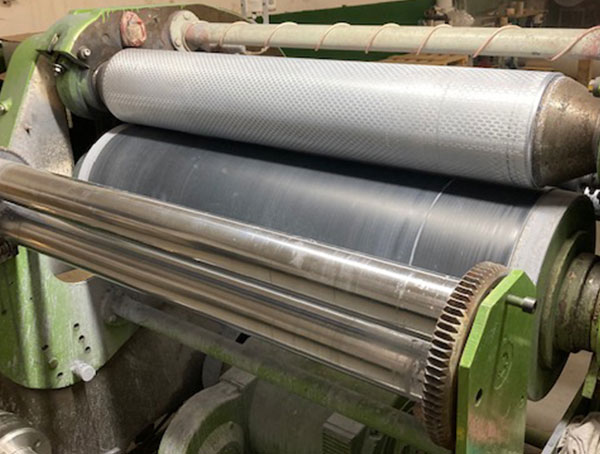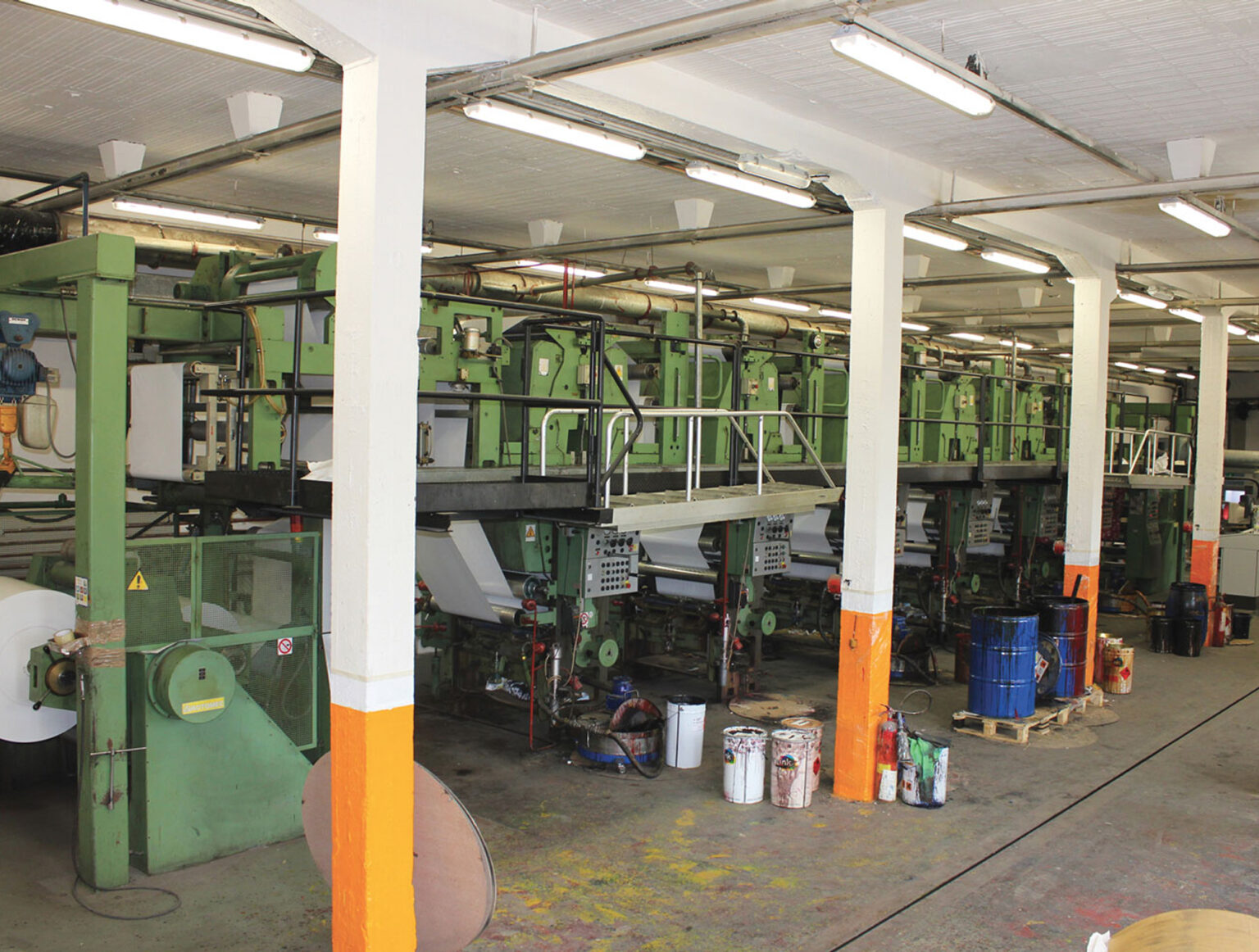Technology
Gravure printing
The Rotomec gravure printing machine, equipped with the latest control unit and control equipment, is the heart of our production.
It was originally designed for printing wallpapers and wrapping papers, but recently we have been increasingly applying various varnishes to BOPET films or aluminium foils.
The six-colour gravure printing machine from the Italian company Rotomec is the cornerstone of all our production.
This printing machine is a production line consisting of six printing tables designed to print paper, non-woven, polyethylene and polypropylene.
It has been completely refurbished in recent years and a state-of-the-art on-line control system has been installed.
Here, by transferring the ink from the printing rollers to the printed material, one ink is always printed, which is dried in the drying chamber, followed by the second ink, etc. In the case of coating BOPET foil, Al foil, either basic or thermoactive varnishes are applied using 1 to 3 grids with different print hole depths. At the end of the printing process, a large roll of printed material is created and is ready for further processing.

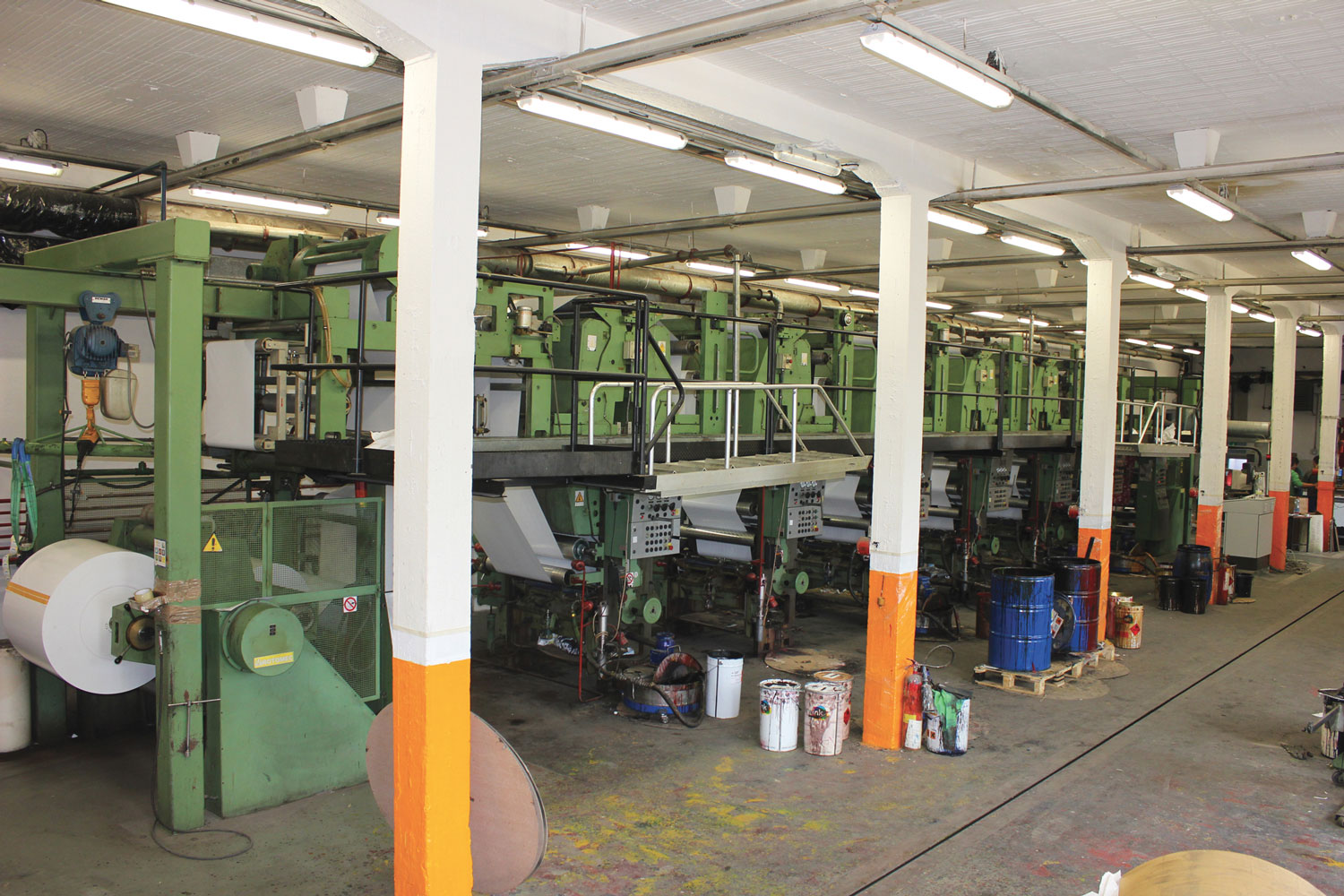
Gluing - laminating
Wallpaper gluing (laminating)
Gluing – lamination of the printed top layer of wallpaper with the bottom carrier layer, which can be 80 g/m2 woodgrain paper or, especially recently, the fashionable material made of non-woven fabrics, the so-called non-woven, takes place on one of the two winding and embossing lines on the second floor of the factory hall. These lines carry out the lamination (gluing) and embossing of wallpaper paper, including the rolling into final rolls.
Trimming of printing marks
- Unwinding station with electromagnetic brake
- Paper supply chamber with independent drive
- Laminating station
- Straightening station with paper draft sensing registration roller
- Embossing station with control panel
- Electrical control cabinet
- Drying chamber with paper supply chamber (not functional)
- wallpaper rolling station
Each of these lines consists of the following sub-equipment:
The gluing, embossing, cutting of the printing marks and rolling of the wallpaper are carried out on these lines in one technologica
l process. The printed top layer is fed into one of the unwinding station. The bottom carrier layer is placed in the second unwinding station and the adhesive is then applied to it in the coating station using a rubber roller. The two layers are then glued together. The bonded material, where the top layer is narrower than the bottom material, is carried to the trimming of the edges – the printing marks – and to the embossing station.
In front of the embossing station there are rotary knives on both sides for trimming the edges with printing marks, which are used to match the individual designs. The trimmed material is blown by
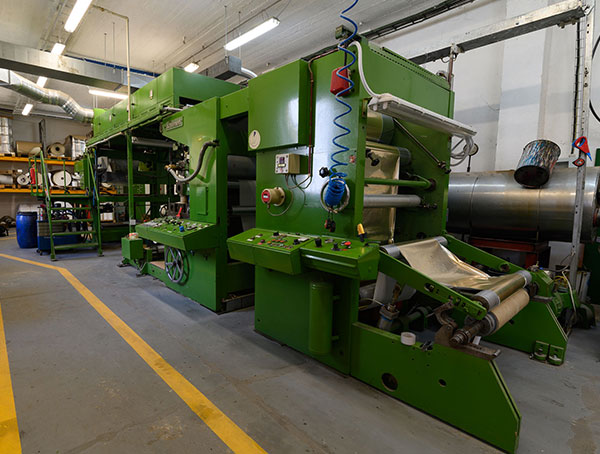
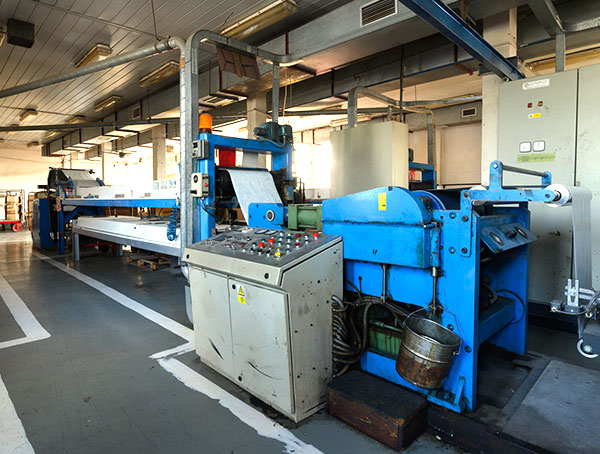
Lamination of the films
On the Kronert laminating machine, aluminium foils are usually bonded to greaseproof paper using wax or other adhesives.
It is also possible to glue other materials – aluminium with PET foils, paper with PET foils, etc. up to a working width of 1000 mm.
Production – lamination takes place at a speed of 200 – 300 m/min., when the wax is heated to a temperature of 110 degrees Celsius.
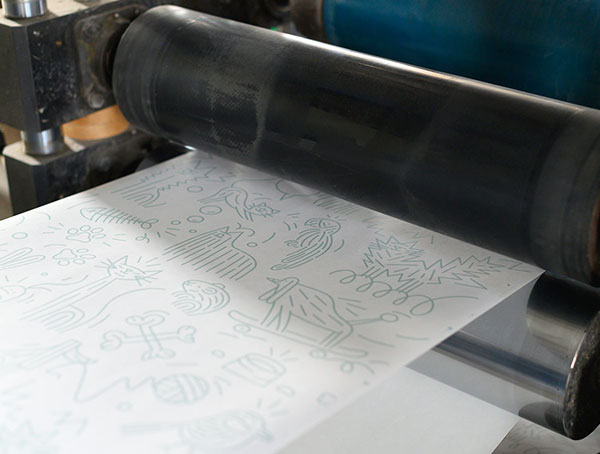
Embossing
Embossing is used to refine wallpaper or aluminium foil.
Shallow or deep embossing is done on wallpapers according to customer requirements, and in the case of aluminium foils it is possible to mark the final product with the manufacturer’s logo or to choose a neutral embossing – e.g. the texture of sand, canvas, etc.
The wallpaper embossing is built into the wallpaper line, where the glued sandwich is carried to the embossing station, which consists of two cylinders – a high-pressure paper cylinder and a steel cylinder – driven by a set of gears and independent motors. In the embossing station, the steel and paper cylinders are used to carry out the respective embossing. The glued, cut and embossed strip of wallpaper is then carried to the supply chamber. This is where the drying of the semi-finished product takes place.
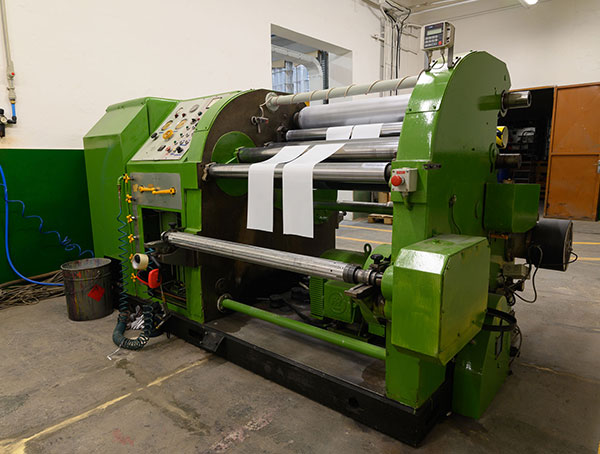
In the case of aluminium foils, embossing is carried out on a Heidemann embossing machine, working width 1000 mm
